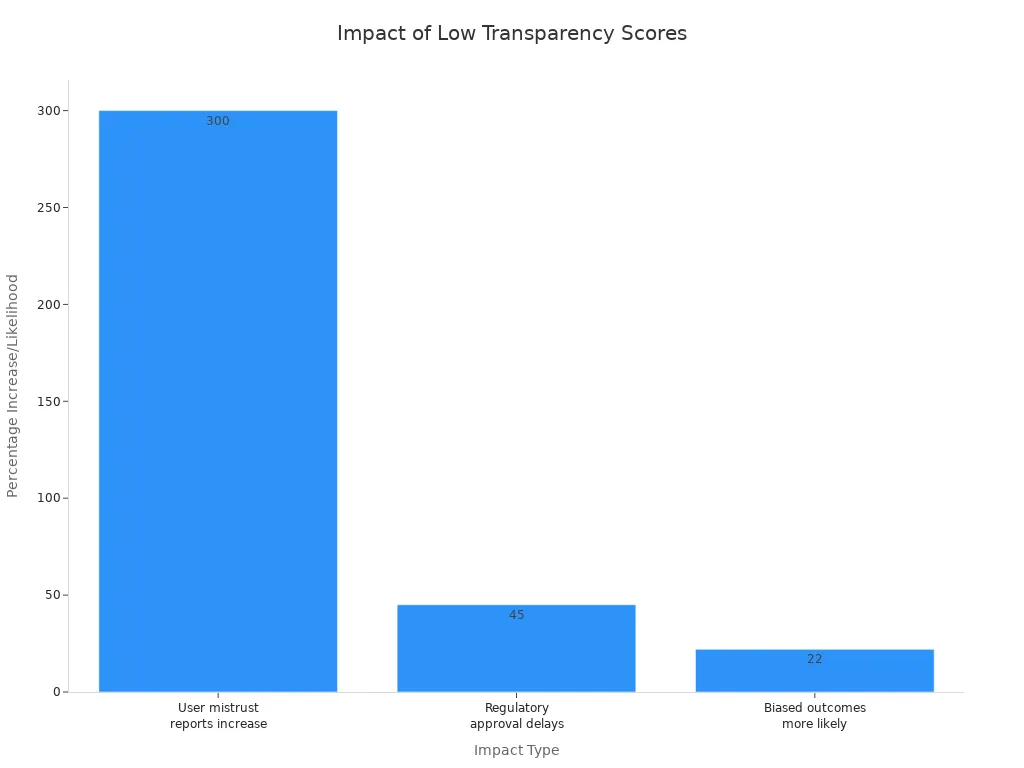
Global fashion supply chains face persistent labor exploitation, a critical ethical challenge. Traditional auditing often fails to uncover this exploitation, as factories can falsify records and coach workers. With only 11% of fashion brands achieving full supply chain transparency, the true working conditions for millions remain hidden. This lack of transparency highlights the systemic exploitation.
- Less than 2% of garment workers earn a living wage.
- Forced labor allegations impact 46% of fashion companies.
- Auditing systems frequently miss safety issues and worker rights violations.
AI tools offer a powerful new lens for monitoring, not a silver bullet. The AI potential for ethical fashion is immense. This raises a central question: How can AI transform ineffective monitoring and auditing into a continuous, data-driven assessment that protects workers, improves working conditions, and ensures ethical sourcing for sustainable fashion? The use of AI in fashion could redefine ethical supply chain compliance and labor sourcing chains. AI is key to fighting exploitation in fashion. AI can improve ethical fashion sourcing chains. AI is a tool against labor exploitation. AI can stop exploitation. AI can stop exploitation. AI can stop exploitation. AI can stop exploitation. AI can stop exploitation. AI can stop exploitation.
How AI Tools Enhance Ethical Audits

Traditional, on-site auditing often provides a mere snapshot in time. Factories can prepare for these visits, hiding the reality of labor exploitation. AI tools disrupt this model. They enable continuous monitoring and a deeper assessment of ethical risks. AI offers a proactive approach to protecting workers. It shifts the focus from reactive problem-solving to predictive prevention. This transformation is crucial for building truly sustainable and ethical fashion supply chains. The use of AI in fashion helps create better working conditions.
Predictive AI for Risk Audits
Predictive AI acts as an early warning system against labor exploitation. This technology moves beyond simple compliance checklists. It analyzes vast datasets to forecast where and when exploitation is most likely to occur. This allows brands to intervene before worker rights are violated. The AI processes information from many sources to build a risk profile for each supplier.
Key data points that AI analyzes include:
- Historical Performance: Past audit results and records of violations.
- External Factors: Geopolitical instability or economic pressures in a supplier's region.
- Production Data: Unrealistic production targets or sudden changes in order volume that may lead to forced overtime.
Note: AI can even analyze time-clock data to detect abnormal patterns. For example, it can flag excessively long shifts or insufficient breaks. These patterns are strong indicators of potential labor exploitation. This level of monitoring is nearly impossible to achieve manually across a global supply chain. AI makes this detailed oversight possible, fighting exploitation in fashion.
By flagging high-risk suppliers, AI helps brands focus their resources where they are needed most. This targeted approach makes the entire monitoring and auditing process more efficient and effective. It is a powerful tool for ethical sourcing.
NLP for Worker Sentiment Analysis
Giving workers a voice is fundamental to any ethical framework. However, analyzing thousands of comments from grievance hotlines or surveys is a monumental task. Natural Language Processing (NLP), a type of AI, automates this process. It transforms unstructured feedback from workers into structured, actionable data. This helps brands understand the real working conditions in their fashion supply chains.
NLP tools perform several key functions:
- Sentiment Analysis: The AI determines the emotional tone of feedback, flagging widespread negative sentiment.
- Keyword Extraction: It identifies frequently mentioned topics, such as "unpaid overtime" or "unsafe equipment."
- Topic Modeling: The AI uncovers hidden themes and trends within large volumes of text.
This automated analysis provides deep insights into the daily experiences of workers. It helps companies identify patterns of exploitation that might otherwise go unnoticed. However, using this AI technology comes with ethical considerations. NLP models face challenges with linguistic nuances, idioms, and cultural references. Many languages also lack sufficient data to train effective AI models. Developing systems that understand diverse dialects adds another layer of complexity. Brands must address these limitations to ensure the AI is fair and accurate for all workers. The goal is to improve transparency, not create new biases.
Integrated Data Platforms for Visibility
The modern fashion industry operates through complex, multi-tier fashion supply chains. A brand may know its direct garment manufacturer (Tier 1) but have no visibility into the fabric mill (Tier 2) or cotton farm (Tier 3). This lack of transparency in supply chains creates blind spots where labor exploitation can thrive.
Integrated data platforms, powered by AI, solve this problem. They create a single, unified view of the entire supply chain. Platforms like Retraced digitally map the journey of a product from raw material to finished good. They achieve this by:
- Onboarding suppliers from every tier to establish a foundation for transparency.
- Collecting and validating transaction records and compliance documents at scale.
- Tracing each production step for individual purchase orders.
This creates a complete digital record, ensuring multi-tier supply chain transparency. Brands can visually map their sourcing chains and identify risks at every level.
Real-World Impact 🌍
Major brands are already using these platforms to drive ethical change. Primark, for example, replaced its manual spreadsheets with a traceability platform. This gave the company deep visibility into its cotton and textile sourcing chains. The system automatically flagged high-risk regions and non-compliant subcontractors. This allowed Primark to act quickly to address labor exploitation risks and improve its ethical sourcing. Similarly, Patagonia uses a robust system to trace materials and monitor labor practices, boosting customer trust and ensuring sustainable sourcing.
These AI tools empower brands to take full responsibility for their entire global supply chain. They provide the data needed to make informed decisions, improve working conditions, and build a more ethical and sustainable fashion industry. This level of assessment is vital for true supply chain compliance.
Challenges for AI in Fashion's Ethical Audits

While AI offers transformative potential, its implementation in fashion's ethical auditing is not without significant hurdles. Brands must navigate challenges related to data, cost, and profound ethical considerations to use these powerful tools responsibly. The success of AI in fashion depends on overcoming these obstacles to prevent further labor exploitation and build truly sustainable supply chains.
Data Integrity and Accessibility
The performance of any AI system hinges on the quality of its data. In the fashion industry, data is often inconsistent, incomplete, or inaccessible, which severely limits the effectiveness of AI tools for ethical sourcing.
If the underlying data is fragmented, incomplete, or stale, no algorithm will work.
This problem originates from several sources within complex fashion supply chains. Many brands still rely on manual processes, leading to widespread inaccuracies. Key issues include:
- Inconsistent style tags like 'boho' or 'retro' that are subjective and vary between merchandisers.
- Confusing color names that break online filters and frustrate shoppers.
- Incomplete product listings that lack essential details like fabric or fit, weakening transparency.
Furthermore, suppliers are often reluctant to share operational data. They fear that providing full transparency could expose their competitive advantages to rivals. This hesitation creates major roadblocks for AI-driven auditing, as these systems require robust data sharing to function. Poor data quality from fashion suppliers leads to flawed risk assessments, missed compliance issues, and unreliable AI outputs. This ultimately erodes trust in the technology's ability to fight labor exploitation and improve working conditions. Standardizing data formats across different suppliers presents another technical challenge, requiring AI to handle everything from legacy system formats to unstructured data without losing information.
Cost and Complexity Barriers
Implementing advanced AI systems requires a significant investment in both technology and talent. Many fashion companies lack the internal expertise to manage these complex tools, creating a major barrier to adoption for ethical sourcing.
The integration of AI is not just about improving efficiency; it’s about fundamentally changing the nature of the audit profession. Auditors will need to develop new skills to effectively leverage AI tools and interpret the insights they provide.
This evolution demands a new skill set that combines traditional auditing with data science. Teams need professionals with:
- Critical thinking to question and interpret AI findings.
- Technical knowledge of AI algorithms and data structures.
- Expertise in regulatory compliance and data privacy laws.
- A commitment to continuous learning to keep up with emerging AI applications.
The high initial cost of AI is another concern. However, viewing this cost as a long-term investment reveals a different picture. AI-powered systems create efficiencies that far outweigh their upfront expense. They automate manual tasks, reduce human error, and provide deeper insights, leading to a strong return on investment. This makes the technology a financially sound choice for sustainable fashion.
| Feature/Metric | AI-Powered Expense Management | Traditional Methods |
|---|---|---|
| Expense Processing Automation | 85% | Manual |
| Audit Cost Reduction | 40% | Higher due to errors & time |
| Employee Productivity Increase | 20% | N/A |
| Financial Error Reduction | 15% | Higher due to human error |
| Processing Cost Reduction | Up to 70% | N/A |
| Error Reduction | Up to 90% | N/A |
| Average ROI (first year) | 300% | N/A |
| Total Cost of Ownership | Efficient & Cost-Effective | Significant long-term costs |
This data shows that AI not only enhances ethical oversight but also delivers measurable financial benefits, making it a powerful tool for building more resilient and responsible sourcing chains.
Algorithmic Bias and Surveillance Risks
The most serious challenges for AI in fashion involve ethical risks. If an AI model is trained on biased data, it can perpetuate and even amplify discrimination, leading to unfair labor assessments. A lack of transparency in how these algorithms work can have severe consequences.

To counter this, brands must ensure their AI models are fair and transparent. This involves using toolkits like AI Fairness 360 or Fairlearn to measure and mitigate statistical biases. These tools help ensure that an AI system treats all groups of workers equitably.
Another major ethical concern is worker surveillance. Continuous monitoring of factory conditions can intrude on the privacy of workers. While 61% of employees are comfortable with monitoring if it is transparent and ethical, the potential for misuse is high. Intrusive monitoring can discourage workers from engaging in protected activities, such as union organizing. The National Labor Relations Board (NLRB) has warned that such surveillance can violate labor rights. The collection of biometric data, such as fingerprints for timekeeping, introduces further privacy risks.
To address these ethical considerations, companies must prioritize transparency and accountability. This means informing workers that they are interacting with an AI system and establishing clear procedures for addressing grievances. Regulations like the EU AI Act are setting new standards, requiring a 30-day resolution timeline for critical ethical concerns. By adopting a framework that puts workers' rights first, fashion brands can use AI to enhance supply chain compliance and fight labor exploitation without creating new forms of harm. This responsible approach is essential for the future of ethical and sustainable fashion.
AI tools offer powerful ways to improve ethical auditing in fashion. Predictive AI, NLP, and integrated platforms enhance monitoring in fashion supply chains. They help fight labor exploitation. However, AI is not a substitute for ethical responsibility. Brands must address ethical considerations to prevent further exploitation. The AI potential for ethical fashion depends on this.
The future of ethical fashion relies on a hybrid model. AI augments human oversight. This empowers brands to make informed decisions about working conditions. It protects workers from labor exploitation.
This collaboration improves supply chain transparency. It enables better ethical sourcing for sustainable fashion. This approach helps stop exploitation in labor sourcing chains. AI helps create better working conditions for workers. AI is a tool against labor exploitation. AI can stop exploitation. AI can stop exploitation. AI can stop exploitation. AI can stop exploitation.
FAQ
Can AI fully replace human auditors in fashion?
No, AI cannot replace human auditors. The best ethical fashion model uses AI to support human experts. This ethical approach helps prevent labor exploitation. The AI provides data; humans provide judgment. This partnership makes ethical fashion supply chains stronger and helps stop exploitation.
How does AI help small ethical fashion brands?
Smaller ethical fashion brands can use affordable AI tools. These AI solutions help them monitor their supply chains effectively. This technology gives them data to ensure ethical practices. It helps them compete and build trust. This use of AI is vital for the future of ethical fashion.
What is the biggest risk of using AI for ethical audits?
The biggest risk is biased AI. An AI trained on flawed data can worsen discrimination. This could lead to unfair labor assessments and hide exploitation. Responsible ethical fashion brands must ensure their AI systems are fair to protect workers in their supply chains. This is a key ethical challenge.
How does AI improve fashion supply chains?
AI improves fashion supply chains by increasing transparency. The AI technology traces products from raw materials to the final store. This visibility helps brands identify risks of labor exploitation. Better data makes the entire fashion industry more accountable. It is a powerful tool for ethical sourcing.
See Also
Revolutionary AI in Fashion: Sustainable Solutions for a Greener World
Intelligent Fashion AI: Optimizing Returns for Enhanced Customer Satisfaction Today
AI's Role in Managing and Adapting to Viral Fast Fashion Trends
The Transformative Impact of AI Sensors on the 2025 Fashion Supply Chain
Dynamic Safety Stock AI: A Key 2025 Solution for Fashion Retail